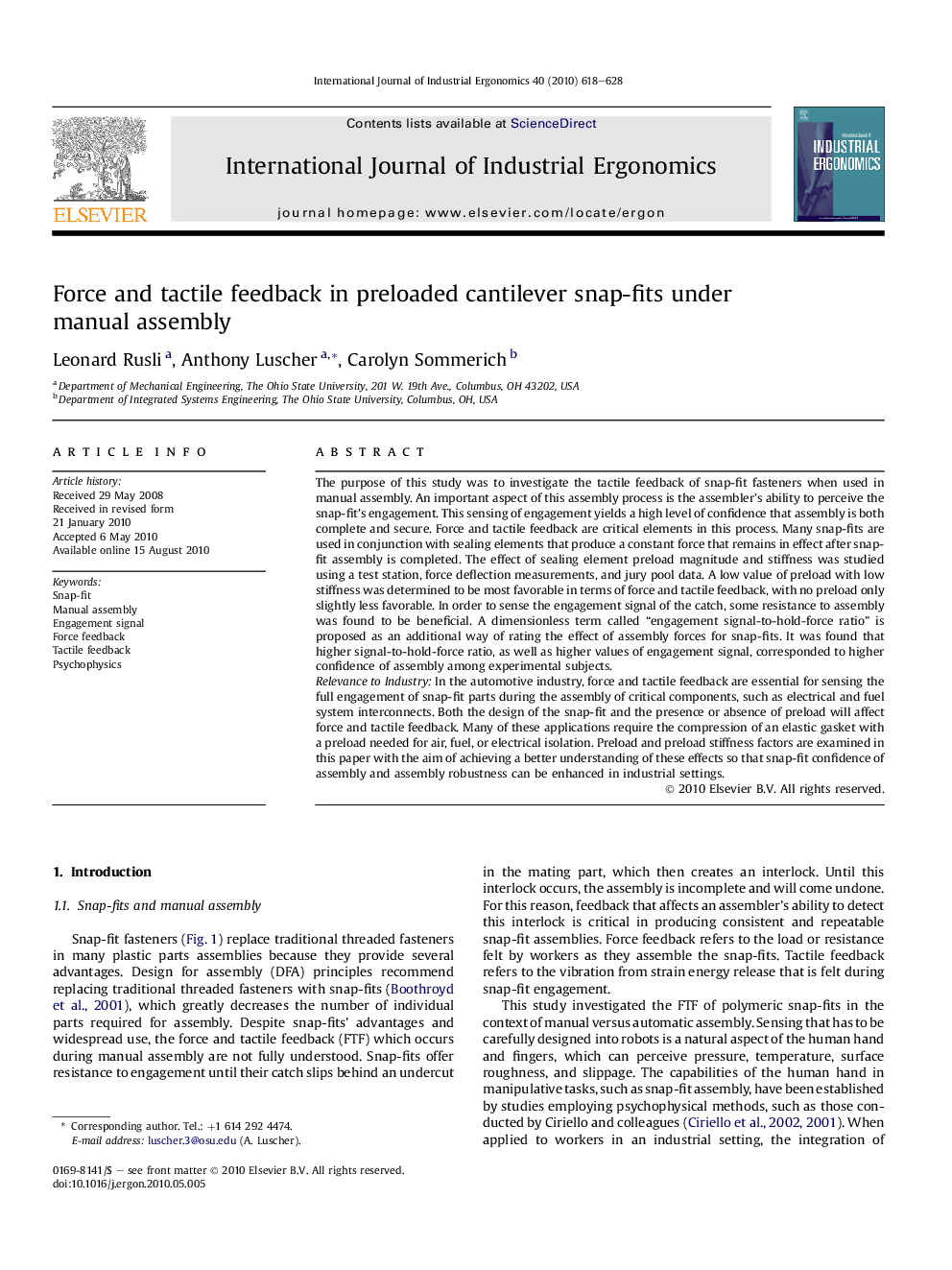| Article ID | Journal | Published Year | Pages | File Type |
|---|---|---|---|---|
| 1096379 | International Journal of Industrial Ergonomics | 2010 | 11 Pages |
The purpose of this study was to investigate the tactile feedback of snap-fit fasteners when used in manual assembly. An important aspect of this assembly process is the assembler’s ability to perceive the snap-fit’s engagement. This sensing of engagement yields a high level of confidence that assembly is both complete and secure. Force and tactile feedback are critical elements in this process. Many snap-fits are used in conjunction with sealing elements that produce a constant force that remains in effect after snap-fit assembly is completed. The effect of sealing element preload magnitude and stiffness was studied using a test station, force deflection measurements, and jury pool data. A low value of preload with low stiffness was determined to be most favorable in terms of force and tactile feedback, with no preload only slightly less favorable. In order to sense the engagement signal of the catch, some resistance to assembly was found to be beneficial. A dimensionless term called “engagement signal-to-hold-force ratio” is proposed as an additional way of rating the effect of assembly forces for snap-fits. It was found that higher signal-to-hold-force ratio, as well as higher values of engagement signal, corresponded to higher confidence of assembly among experimental subjects.Relevance to IndustryIn the automotive industry, force and tactile feedback are essential for sensing the full engagement of snap-fit parts during the assembly of critical components, such as electrical and fuel system interconnects. Both the design of the snap-fit and the presence or absence of preload will affect force and tactile feedback. Many of these applications require the compression of an elastic gasket with a preload needed for air, fuel, or electrical isolation. Preload and preload stiffness factors are examined in this paper with the aim of achieving a better understanding of these effects so that snap-fit confidence of assembly and assembly robustness can be enhanced in industrial settings.
